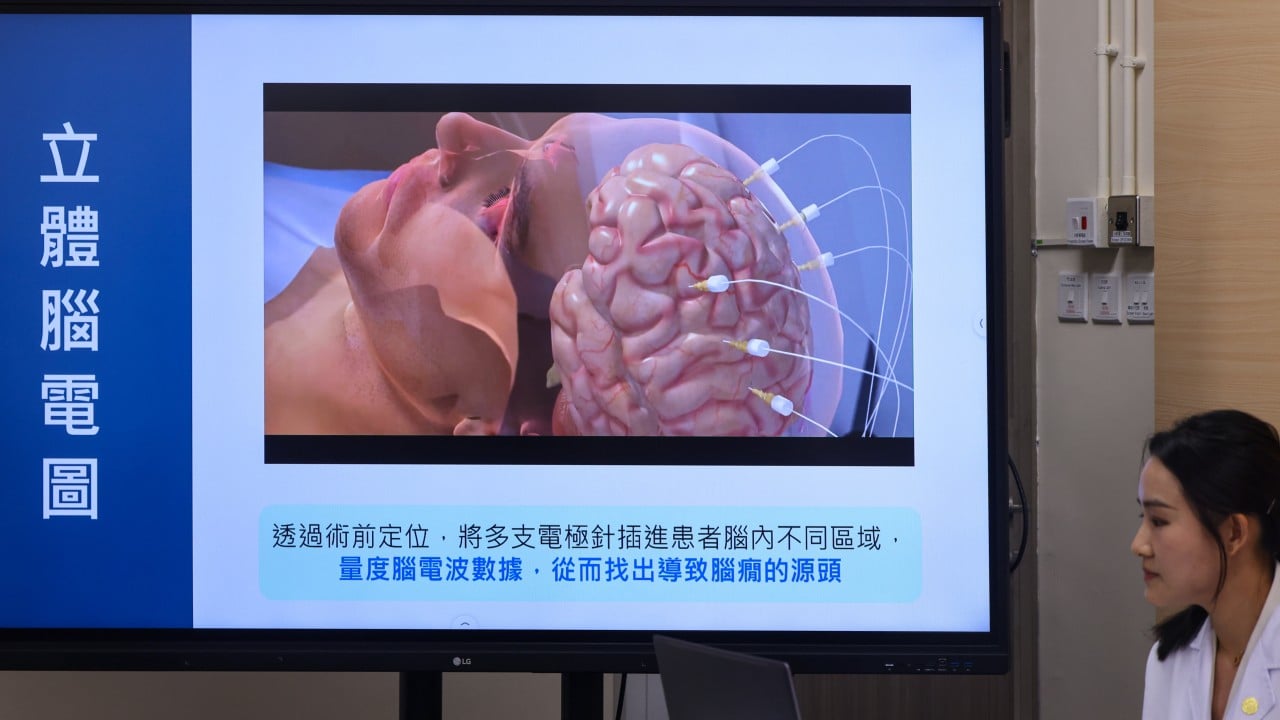Hongkonger Lo Wai-shing, 45, was diagnosed with drug-resistant epilepsy when he was 15 and says he once suffered from 10 seizures in a single month and might still experience one or two episodes a month despite taking medication.
Advertisement
Holding down a regular job proved difficult due to his condition, he said, adding that he had only ever worked for his uncle’s company and a supermarket that also employed his aunt.
Lo underwent minimally invasive surgery at Queen Mary Hospital in April that involved a new robotic system. The procedure allowed doctors to identify the area of his brain that was causing the seizures and use heat generated by radio waves to destroy a small part of the tissue to help relieve his condition.
“In the month after the surgery, I have not had any seizures, and I sleep very well,” he said. “I am very happy as it has largely reduced the frequency of the seizures.”
The new robotic system means doctors in Hong Kong can use a more accurate and less invasive approach to identify the sources of epilepsy conditions that are untreatable with medication.
Advertisement
Dr Benedict Taw Beng-teck, a neurosurgery consultant at the hospital, said the system could assist surgeons during a procedure named stereoelectroencephalography (SEEG), which involves locating the area of the brain that causes epilepsy.

